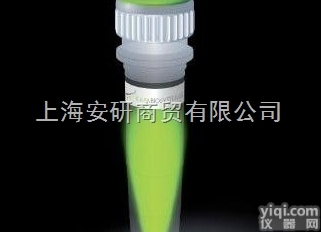产品名称:分子伴侣复合体TCP-1β抗体,Anti-TCP1 beta抗体
中文名称:分子伴侣复合体TCP-1β抗体
英文名称:Anti-TCP1 beta
产品编号:byk-11267R
产品规格:0.1ml/0.2ml
产品用途:科研实验
性 状: Lyophilized or Liquid
浓 度: 1mg/1ml
亚 型: IgG
贮 存: 贮存于-20℃.
相关标记: HRP Biotin Gold RBITC AP FITC Cy3 Cy5 Cy5.5 Cy7 PE PE-Cy3 PE-CY5 PE-CY5.5 PE-CY7 APC Alexa Fluor 350 Alexa Fluor 488 Alexa Fluor 555 Alexa Fluor 647
我公司拥有领先的细胞服务技术,先进的仪器设备和专业的ELISA检测试剂盒、生物索标记、荧光索标记、酶标记等,广泛用于多种分析研究与技术测定。欢迎来电咨询,我们将竭诚为你服务!
分子伴侣复合体TCP-1β抗体,Anti-TCP1 beta抗体 相关产品:
肿瘤坏死因子配体超家族成员12A抗体 Anti-TNFRSF12A/TWEAKR/CD266
载脂蛋白B-mRNA编辑酶复合物2抗体 Anti-APOBEC2
跨膜蛋白106B抗体 Anti-TMEM106B
诱捕受体2抗体 Anti-DcR2/CD264/TNFRSF10D
G氨基丁酸A型受体θ/GABAA Rθ抗体 Anti-GABRQ/GABA A Receptor theta
肿瘤坏死因子配体超家族成员10C抗体 Anti-DcR1
类固醇受体复合物蛋白FKBP5抗体 Anti-FKBP51
双皮质素抗体 Anti-Doublecortin
TANC1蛋白抗体 Anti-TANC1
淋巴细胞抗原75抗体 Anti-DEC-205/CD205/Ly75
ALKB蛋白抗体 Anti-ABH1/ALKB
CD299抗体 Anti-DC-SIGNR/CD299
转录调节蛋白BACH2抗体 Anti-BACH2
细胞间粘附分子非整合素蛋白3抗体 Anti-DC-SIGN/CD209
磷酸化B-Raf抗体 Anti-phospho-B Raf (Thr598)
溶酶体相关膜蛋白3抗体 Anti-LAMP-3/DC-LAMP/CD208
磷酸化B-Raf抗体 Anti-phospho-B Raf (Thr446 + Ser601)
C型凝集素结构域家族5成员A抗体 Anti-CLEC/MDL1
3-羟氨苯甲酸双加氧酶抗体 Anti-HAAO
核心蛋白聚糖抗体 Anti-DCN/Decorin
抗体规律
(1)初次反应产生抗体:当抗原一次进入机体时,需经一定的潜伏期才能产生抗体,且抗体产生的量也不多,在体内维持的时间也较短。
(2)再次反应产生抗体:当相同抗原第二次进入机体后,开始时,由于原有抗体中的一部分与再次进入的抗原结合,可使原有抗体量略为降低。随后,抗体效价迅速大量增加,可比初次反应产生的多几倍到几十倍,在体内留存的时间亦较长。
(3)回忆反应产生抗体:由抗原刺激机体产生的抗体,经过一定时间后可逐渐消失。此时若再次接触抗原,可使已消失的抗体快速上升。如再次刺激机体的抗原与初次相同,则称为特异性回忆反应;若与初次反应不同,则称为非特异性回忆反应。非特异性回忆反应引起的抗体的上升是暂时性的,短时间内即很快下降。
分子伴侣复合体TCP-1β抗体,Anti-TCP1 beta抗体 产品详情:
CCT2 is one of eight largely unrelated subunit proteins found in a protein chaperone complex known as the chaperonin-containing TCP-1 (CCT) or TRiC complex. The CCT complex is an abundanct cytoslic component that is credited with helping newly synthesized polypeptides adopt the correct conformation (1). Proteins that fold and assemble with the help of CCT include the cytoskeletal proteins actin and tubulin as well as up to 15% of newly synthesized eukaryotic proteins (2). CCT2 is the β-subunit of the chaperone complex and is one of several CCT proteins that exhibit increased expression in response to stress. This implies that the CCT complex helps cells recover from protein damage by assisting in protein folding and assembly (3). CCT subunit levels also change throughout the cell cycle, with lower proteins levels (and reduced chaperone activity) found during induced cell cycle arrest during at M phase (4). Each CCT subunit is thought to perform a specific function during protein folding and assembly (5); CCT2 exhibits both actin and tubulin binding activities (6,3) but the exact molecular function on this subunit remains uncertain.
 分子伴侣复合体TCP-1β抗体,Anti-TCP1 beta抗体
分子伴侣复合体TCP-1β抗体,Anti-TCP1 beta抗体
 分子伴侣复合体TCP-1β / 分子伴侣复合体TCP-1β抗体
分子伴侣复合体TCP-1β / 分子伴侣复合体TCP-1β抗体
 分子伴侣复合体TCP-1α / 分子伴侣复合体TCP-1α抗体
分子伴侣复合体TCP-1α / 分子伴侣复合体TCP-1α抗体
 分子伴侣复合体TCP-1β抗体|TCP1 beta抗体价格,厂家
分子伴侣复合体TCP-1β抗体|TCP1 beta抗体价格,厂家
 Anti-TCP1 alpha抗体,分子伴侣复合体TCP-1α抗体说明书
Anti-TCP1 alpha抗体,分子伴侣复合体TCP-1α抗体说明书
 TCP1 alpha抗体,分子伴侣复合体TCP-1α抗体
TCP1 alpha抗体,分子伴侣复合体TCP-1α抗体
 TCP1 alpha抗体,分子伴侣复合体TCP-1α抗体
TCP1 alpha抗体,分子伴侣复合体TCP-1α抗体
 Anti-TCP1 beta抗体,分子伴侣复合体TCP-1β抗体
Anti-TCP1 beta抗体,分子伴侣复合体TCP-1β抗体
 Anti-TCP1 alpha抗体,分子伴侣复合体TCP-1α抗体
Anti-TCP1 alpha抗体,分子伴侣复合体TCP-1α抗体
 Anti-TCP1 beta抗体,分子伴侣复合体TCP-1β抗体
Anti-TCP1 beta抗体,分子伴侣复合体TCP-1β抗体
 Anti-TCP1 alpha抗体,分子伴侣复合体TCP-1α抗体
Anti-TCP1 alpha抗体,分子伴侣复合体TCP-1α抗体
 TCP1 beta抗体 分子伴侣复合体TCP-1β抗体
TCP1 beta抗体 分子伴侣复合体TCP-1β抗体